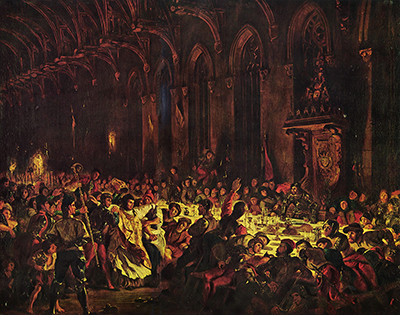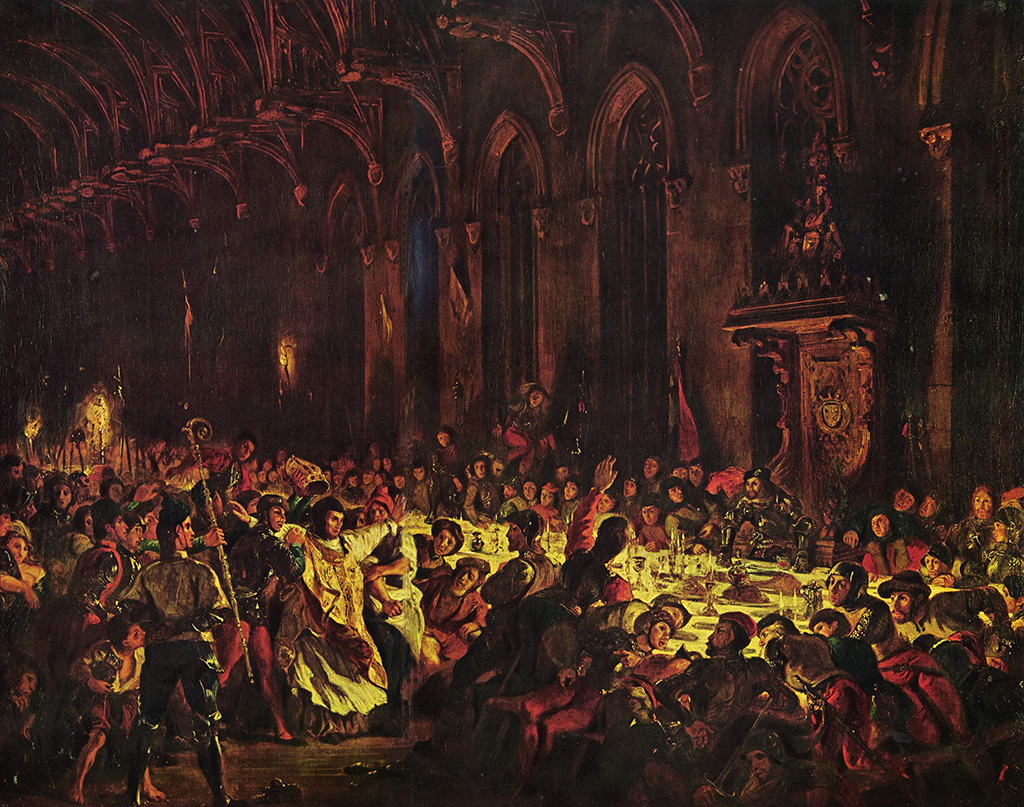Louis de Bourbon, Bishop of Liège was lynched by soldiers representing William I de La Marck as part of the ongoing Wars of Liège which ran from 1465 to 1468.
Delacroix's depiction of this event came about in circa 1828/1829 and features a huge plethora of figures across a large canvas that now desides at the Louvre. A large amount of detail was also added to the architecture of this scene, with huge arched windows decorating the right hand side of the painting.
Fashion was always a big interest of this artist and here we find each and every figure here featuring carefully planned attire that considers their relative role in the piece and also covers the historical context of the event. Delacroix would always research his historical paintings in a thorough way in order to ensure accuracy, as shown in some of his war paintings too, where weaponry would also become a major consideration.
The setting found here is saturated with dark tones, they a great contrast is delivered with the addition of the bright white table cloths that spread across the length of the table. The artist was experimenting with deeply contrasting shades during this period of his career, whilst it also continues the violence as shown in two other related artworks from around this time, namely The Death of Sardanapalus and The Execution of Doge Marino Faliero.
The latter was inspired by a number of Titian paintings which he studied earlier in his career, such as Flora, Ecce H*mo and Isabella of Portugal.
"...this little canvas yells, shouts, blasphemes ... one hears the tipsy soldiers' obscene songs. Such figures of brigands! ... What jovial and bloodthirsty b*stiality! It swarms and squeaks just as it blazes and stinks!..."
Étienne-Jean Delécluze
This is the type of grand painting that is ideally suited to the Louvre, which holds some delightfully decorative interiors with large walls that were designed with the larger, traditional styles of art in mind. Delacroix himself is particularly well served within this institution with a host of paintings to be found within their collection, as well as a large number of study drawings which have helped enormously in enabling the institution's researchers and art historians to better understand the precise working processes of this famous French artist.
The highlight to be found here would have to be the extraordinary Liberty Leading the People which is amongst the most significant paintings ever produced from the perspective of the French nation. It is also a beautiful and emotionally charged piece that perfectly captures the essence of the Romanticist movement.





